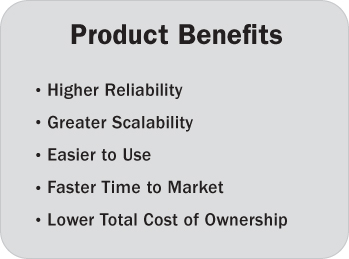14. Getting to “Aha!”: The Magic Moment
Dr. John Kounios, a psychologist at Drexel University in Philadelphia, defined the “Aha!” Moment in a Wall Street Journal article as “any sudden comprehension that allows you to see something in a different light .... It could be the solution to a problem; it could be getting a joke; or suddenly recognizing a face.”F14.1
The “Aha!” Moment
According to William Safire, the master etymologist of the New York Times, the first person to express the moment was Chaucer in a fox hunt in his Canterbury Tales.F14.2 Archimedes undoubtedly experienced it when he noticed the displacement of water in his bath, as did Sir Isaac Newton when he saw an apple fall from a tree, and Alexander Graham Bell when he called to his assistant, “Watson, come here; I want you.”
The “Aha!” Moment
Oprah Winfrey and Mutual of Omaha engaged in a protracted legal battle over the advertising use of the phrase until they finally settled out of court.
The “Aha!” Moment
History is filled with quests for the defining moment—that magic instant of Eureka or epiphany, that sudden turning or tipping point.
You can achieve the presentation equivalent of the “Aha!” Moment with your audiences if you learn one very simple technique—but be forewarned that the technique breaks rank with common practice in business today. Standard Operating Procedure is to load up the PowerPoint deck with all the information that the presenter thinks an audience needs to evaluate a proposal and make a decision. In other words, the slide show is meant to stand alone. You will read about the folly of this approach in the next section on graphics, but it will be from the design point of view.
For now, let’s look at the presenter’s point of view. If the slide show is correctly viewed solely as support for the presenter—as it should—then the presenter’s narrative can go beyond the information on the slides to provide substance and even add value. The presenter can go even further to lead the audience to a conclusion about the slide with information that does not appear on the slide.
For example: The CEO of a start-up company seeking financing makes a pitch to a venture capital company. During the presentation, the CEO puts up the simple slide in Figure 14.1:
Figure 14.1. Presentation slide

The CEO discusses each of the benefits briefly and then summarizes, “So you can see that our product provides a rich set of benefits to our customers.”
All very well and good, but imagine if the presenter were to add the following statement in the narrative only: “These benefits bring our company repeat business, repeat business brings us recurring revenues, and recurring revenues grow shareholder value.”
The “Aha!” Moment.
